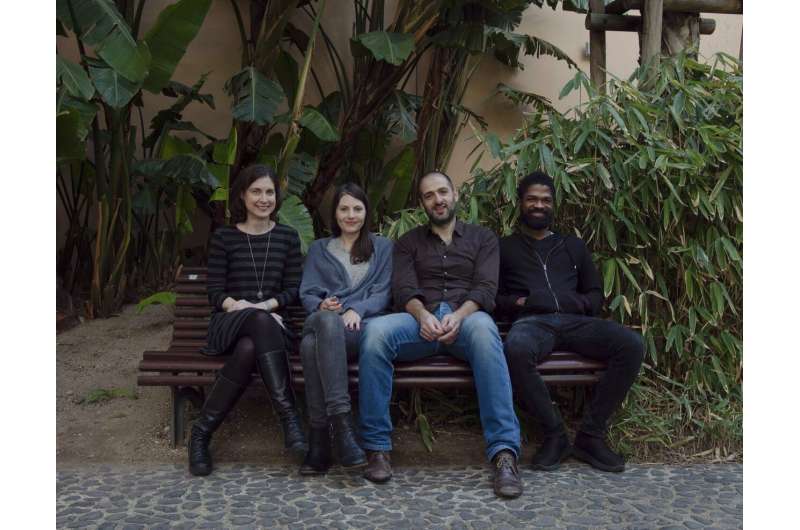Untangling the where and when of walking in the brain

Imagine walking on two treadmills at the gym, one side moving faster than the other. Would you be able to adapt to this change and come up with a new way of walking, or would you stagger and stumble as your legs falter about, completely out of sync?
This may seem like an extreme scenario, but without realising it, our brains adapt our walking patterns on a regular basis. This happens when learning how to roller skate, walking on unstable terrain like a mountain road, or even when just breaking in a new pair of high-heeled shoes.
How do we manage to master these tasks? The answer is practice. The brain learns by trying again and again until it fine-tunes the movement commands necessary to achieve our goals. This ability to learn new locomotor patterns can be revealed using a "split-belt treadmill" that imposes different speeds on each side of the body, causing asymmetric walking. People learn to regain symmetry over a few minutes of split-belt walking.
From two legs to four
In order to understand how the brain learns new locomotor patterns, the lab of Dr. Megan Carey at the Champalimaud Centre for the Unknown in Lisbon, Portugal, developed a split-belt treadmill for mice. This allows them to manipulate neural activity in specific populations of neurons to test their role in locomotor learning. In an article published today in the journal Neuron, the lab demonstrates that mice learn in a way that is very similar to humans, and reveals insights into how the brain makes this learning happen.
"We were surprised at the striking similarities between human and mouse locomotor learning," says Dr. Carey. Like humans, split-belt learning in mice depends on the cerebellum, a brain region located at the base of the brain that is controls coordination and various forms of motor learning. Further, both human and mouse learning have two separate components that adapt at different rates—space and time.
Untangling space and time in the brain
"When we're walking (especially on a Portuguese calçada!) we have to put our feet in the right place, at the right time. Either one of these is not sufficient on its own," says Dr. Carey. "We found that controlling "where" and "when" are achieved differently, within the cerebellum."
To study split-belt learning in mice, Carey's team used LocoMouse, a computer vision algorithm they had previously developed in the lab, that tracks the movements of a a mouse's paws, nose, and tail non-invasively over time.
Using LocoMouse in combination with molecular genetic tools to manipulate neural activity, the researchers were able not only to pinpoint how the movements of each of the four limbs were adapting during learning, but also to untangle the "when" and "where" of locomotor learning, in the brain.
"We found that the two sides of the brain contribute differently to the spatial and temporal components of learning," explains Dana Darmohray, a graduate student in the Carey Lab and the first author of the study. "We found that spatial learning was impaired when we manipulated neural activity on either side of the cerebellum. In contrast, temporal learning was only affected if neural activity was manipulated on the fast side of the treadmill."
"The lateralization we found on the neural level corresponded remarkably well to our behavioral analysis," says Carey. "While all four limbs contributed to spatial learning, the front, fast paw made a unique contribution to learning in time. Taken together, these findings suggests that learning 'where' and 'when' to place the feet are processed separately in the brain."
The Future
Locomotor learning on a split-belt treadmill is used as a rehabilitative therapy in humans with asymmetric walking patterns, such as stroke patients. "Considering the many similarities we uncovered between mouse and human learning, we hope that perhaps one day the insights gained from this system could be used for the design of novel therapeutic approaches for people," says Carey.
Dr. Carey and her team are already preparing for the next set of challenges: "Now, with the tools we have developed, we can start investigating how the brain masters coordination challenges like this more in depth. Next, we want to find out how the brain breaks down sensory and motor signals to calibrate movement in space and time," she concludes.
More information: Dana M. Darmohray et al, Spatial and Temporal Locomotor Learning in Mouse Cerebellum, Neuron (2019). DOI: 10.1016/j.neuron.2019.01.038

















